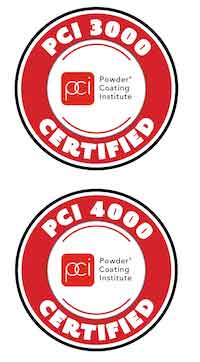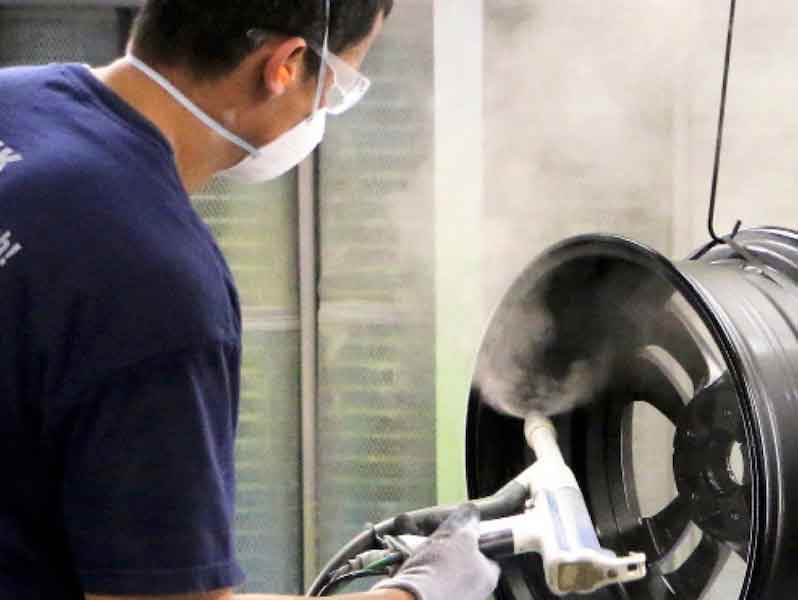When Kevin Coursin asks large OEMs why they want their finishing operations certified by the Powder Coating Institute, he often gets the exact same response.
 Kevin Coursin“Most say that they want an independent third-party to come in and tell them that, yes, they are doing it right,” says the PCI Executive Director. “They suspect they are, but they still want something they can hand to their management to show they are doing everything the right way.”
Kevin Coursin“Most say that they want an independent third-party to come in and tell them that, yes, they are doing it right,” says the PCI Executive Director. “They suspect they are, but they still want something they can hand to their management to show they are doing everything the right way.”
For several years, the trade association has offered what they call “PCI Certification” through an extensive audit process that evaluates both custom coaters and OEMs. Those certified coaters can show through audited performance measurement that they have the equipment and processes in place to correctly clean, coat, and cure their parts and products.
Custom Coater and OEM Certifications
 There are two types of certifications that PCI currently offers:
There are two types of certifications that PCI currently offers:
- PCI 3000 Certification applies to custom coaters and enables them to show manufacturers that they take their powder coating needs seriously and have taken appropriate steps to ensure they have the equipment and procedures in place to meet their specific requirements.
- PCI 4000 Certification applies to OEMs and illustrates their commitment to quality and confirms that they are capable of producing a high-quality coated part that meets consumer expectations.
Coursin says the programs are intended to improve and enhance the ability to apply powder coatings, optimize performance, contribute toward raising industry standards, and recognize the merits of a capable coater.
“PCI 3000 Certification also provides those custom coaters the opportunity to pursue projects requiring PCI Certification,” he says.
Surprisingly, there has not been a large number of custom coaters who are pursuing the PCI Certification tract, and PCI is working more aggressively to hone the message that it is well worth the investment of a job shop or OEM to have their facility audited.
Simple Process Allays Audit Fears
Fiona Levin-Smith, Vice President of Marketing and Specification at IFS Coatings, sits on the PCI Certification committee and says some companies may be afraid of having their facility audited.
“A recently certified coater told us that the word ‘audit’ brings up all sorts of horrible connotations,” she says, “They were amazed at how simple the process was and how supportive and helpful the PCI staff working with them during certification were.”
Levin-Smith says the internal improvements at the facility have had an instant effect and have allowed them to become more efficient.
“They are taking on more work where previously they were simply too busy,” she says. “It is great to hear certified coaters be blown away by how the certification process has helped them improve and grow as a company.”
After a pre-audit telephone consultation, the certification process includes an initial on-site audit which can take 1-2 days and looks at 10 areas of competency. Supporting documentation such as logs and record-keeping procedures are required.
Upon passing the on-site certification audit, the certified company is required to complete an annual Certification Maintenance Audit for the next two years, which is a self-audit that verifies that processes and procedures evaluated during the on-site audit have been sustained to the level required for certification. Any changes or updates to systems or processes must be shown through documentation and photographs.
10 Areas of Focus for Certification
 Coursin says the PCI Certification for custom coaters and OEMs looks at 10 main areas:
Coursin says the PCI Certification for custom coaters and OEMs looks at 10 main areas:
- Surface Preparation: processes used, equipment condition, maintenance procedures, and adequacy for substrates being treated. Testing procedures to confirm satisfactory pretreatment results are also evaluated.
- Ovens and Curing: equipment condition, calibration, and preventive maintenance procedures and documentation. Documentation and tracking of recipes for operation parameters/oven set points per customer requirements.
- Booth and Recovery: location and condition of application area. Compressed air quantity and quality, as well as system location and distribution design. Powder reclamation process. Condition of collection booth and related equipment, maintenance, and cleaning procedures.
- Powder Application: application equipment condition and maintenance. Good earth grounding practices. Color change process. Operator PPE.
- Incoming Quality Control: documentation and evaluation of parts prior to coating. Powder coating inventory usage, storage conditions, and evaluation procedures. Technical and safety data maintenance and availability. Reject process.
- Training: process for all powder coating personnel, including operators and supervisors.
- Maintenance: program, schedule, and documentation process for equipment maintenance.
- Process Management: job tracking for the entire coating process, including documentation of line speed, coating data, unique specifications and requests, production schedule, part hanging, quality tests, etc.
- Final Quality Control: the existence of a quality management program and quality manual. Definition of quality parts vs. rejects, documented and tracked. Root cause analysis process.
- Loading, Unloading, and Packaging: loading and hanging process support coating objectives. Rack and conveyor condition. Part handling, evaluation, and touch-up process. Packaging specifications and consistency.
Certification Helps Shops Grow Business, Improve Efficiencies
The shops that have undergone the certification process rave about how it has helped their powder coating operation not only improve efficiencies but also helped them grow their bottom line profits by reducing waste and inefficiencies.
Spencer Cheak, Group President of GameTime/PlayCore Southern Fulfillment Center in Alabama, says the audit and certification process improved their operation and reduced some costs.
“To be recognized by a third party for our conscientious manufacturing practices and processes is not only a testament to all the hard work our team puts in to ensure a top-quality product, but an overall assurance of quality that our customers can trust,” Cheak says.
Michelle Payden, Quality Manager at ABITL Finishing and ABITL Powder Coating in Tulsa, Oklahoma, says PCI is leading the way in setting the bar for best practices in the coating industry.
“For us, certification works internally and externally,” she says. “It provides best practices within our organization and bolsters customer confidence in our quality consistency and repeatability.”
Certification Fees In Line with Quality Programs
Coursin says that while there is a financial investment involved with getting certified, custom coaters and OEMs can reclaim those expenses through operations and waste reductions
For example, a facility with a batch process and one or multiple lines can have an audit completed for between $3,600 and $3,900 for members and $5,150 to $5,670 for non-members, with the annual maintenance audit running close to $1,100 annually.
An company with multiple facilities may see fees that run close to $5,950 for members and $8,500 for non-members for the entire operation, but those shops will see improvements and a return-on-investments with the audit.
“I tell everyone that the PCI Certifications is a quality program,” Coursin says. “There are some who tell us they use ISO, but I know that ISO doesn’t always fit some of the industries that we have as they focus on general processes and practices and the PCI program is specifically for powder.”
Where ISO may be perfect for a coating facility that is running tens of thousands of the same parts each day, most coaters are doing different parts with different sizes and needs, and therefore having a shop that is prepared to handle that level of volume and variety is important.
“We do not certify the product,” Coursin says. “But we will certify that you have all the processes in place to provide a quality product.”
For information on the PCI Certifications, please visit www.powdercoating.org/getcertified



































